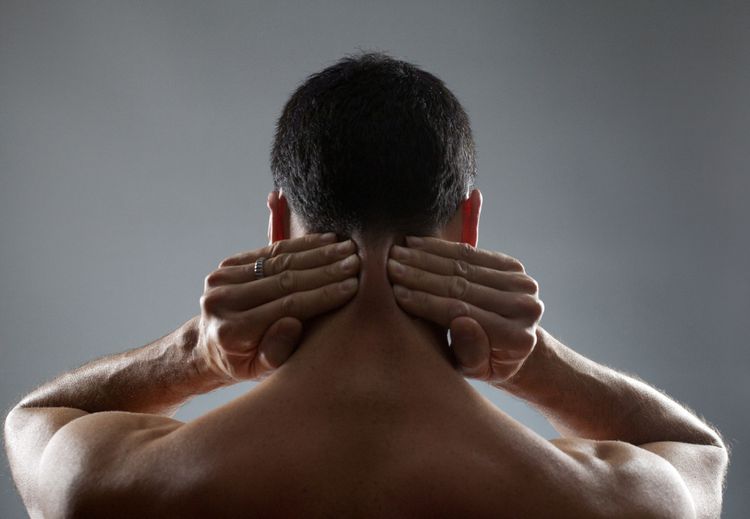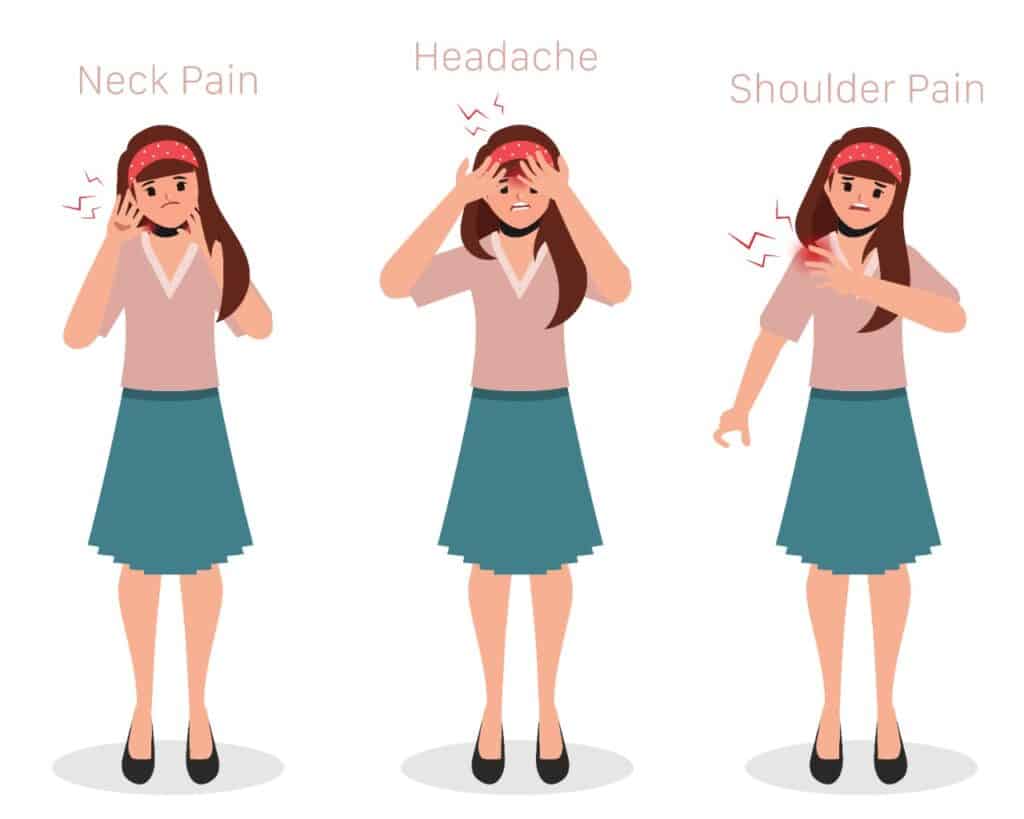Cervical Spondylosis
Treatments
Cervical Spondylosis Homeopathy Treatment
Neck pain can be brought on by a variety of factors, but getting older is the most common one. The cervical spine’s discs and joints slowly deteriorate as we age, much like the rest of the body. The medical word for these ageing-related wear-and-tear changes that develop over time is cervical spondylosis, also known as arthritis of the neck.
Extremely many people have cervical spondylosis. Over 85% of persons older than 60 are impacted. Although many patients with cervical spondylosis show no symptoms, the illness most frequently results in neck pain and stiffness. The majority of the time, cervical spondylosis is successfully treated with conservative measures, including medication and physical therapy.

Risk Factor of Cervical Spondylosis
Your neck, shoulders, upper back, and potentially your arms can all be impacted by age. It can also affect your cervical spine. Not everyone may experience neck pain as they age, but degenerative spinal diseases can result from the daily stress our spines endure.
Considering that previous research has demonstrated that genetics determines one’s spine’s structure and that similar spines tend to degrade similarly, the presence of familial cervical spondylosis is not an unreasonable hypothesis. Therefore, in some situations, genetic counselling for a family may prove to be quite beneficial in letting siblings know that they are at high risk for cervical spine injuries. No matter how uncommon it may be, any spine surgeon who finds cervical spine anomalies in multiple family members should be on the lookout for familial cervical spondylosis.
One of the risk factors is a history of neck injuries, such as those caused by auto accidents. It can occasionally compress the spinal cord and nerve roots. As the discs deteriorate, the body may mistakenly produce more bone in an effort to safeguard the spine. These bone spurs can occasionally cause damage to the spinal cord and nerve roots.
Years of sitting work, long hours, and bad posture all increase your chance of developing cervical spondylosis. The effect of ongoing, recurring stress is neck pain in two-thirds of persons. Lifestyle factors that affect neck discomfort include time, doing the same neck movements repeatedly throughout the day, being overweight, and being sedentary.
Some parts of the upper body, like the shoulders, could become numb and weak as a result of this degenerative process. Work-related activities that strain your neck more than usual, holding your head in an uncomfortable position for long periods of time, repeating the same neck movements all day, and being sedentary are all lifestyle choices that can cause neck pain.
Causes of Cervical Spondylosis
Stacks of bones called vertebrae make up your spine. A powerful, springy disc that serves as a shock absorber is located between each vertebra. As part of a process known as degenerative disc disease, these discs deteriorate over time.
Both sexes of the aging population tend to suffer from this cervical spine condition. The most frequent complaint of patients is discomfort. Surgery may be necessary to treat pain alone or in conjunction with other neurological problems. Non operative treatments, decompression, instrumented fusion, or a variety of laminoplasty and instrumentation are all possible forms of treatment.
You might have a herniated cervical disc if you’ve never experienced neck or upper back pain. Although it sounds alarming, it is a typical health issue as you age. Often, you can have one without exhibiting any symptoms.
A gel-like substance can be found in the center of the discs that separate the vertebrae. The fibrous cartilage that makes up a disk’s exterior retains the gel inside. When the outside part tears or cracks, the gel may protrude. What a herniated disc actually signifies is this.
A “slipped disc” or a “ruptured disc” are other names for it.
Osteophyte production is regarded as the body’s attempt to repair itself and may be brought on by degenerative processes. Degeneration can negatively impact several of the spine’s structural components and lead to a series of issues, such as changes in disc structure (e.g., straightening, shrinking, reducing), thickening of spinal ligaments, and joint enlargement—individually or in combination. These changes impair the spine’s normal motion.
Injuries, trauma to the spine, aging, and degenerative diseases can cause bone spur formation. Another factor mentioned as a potential contributor is poor posture.
With time, spinal ligaments might harden, reducing the flexibility of your neck. A stiff neck is often characterised by pain and stiffness, particularly while attempting to turn the head to the side, and could come with a headache. Turning the whole body rather than just the stiff neck while looking to the side or over the shoulder may be necessary.

Symptoms of Cervical Spondylosis
The majority of people have no symptoms. When symptoms do show up, they frequently involve neck aches and rigidity.
The spinal canal can occasionally become smaller within the spine’s bones as a result of cervical spondylosis. These symptoms could occur if the spinal cord or nerve roots are pinched:
1. Neck stiffness and pain
2 .Reduced flexibility and range of motion, particularly when it is cold in the morning and when you are just idle for a much longer time.
3 .The following symptoms could occur if the spinal cord or nerve roots are pinched: Your arms, hands, legs, or feet experience tingling, numbness, or weakness.
4. Walking difficulties and a lack of coordination
5. A lack of bowel or bladder control
Homoeopathic Approach for Cervical Spondylosis
The most effective treatment for cervical spondylosis is homeopathic medicine. Homeopathic remedies for cervical spondylosis provide quick pain relief and enhance mobility. Even if degenerative changes in cervical vertebrae and joints that exhibit degeneration or nerve compression cannot be improved by drugs, the patient reports significant pain alleviation and increased mobility. Even though the patient is experiencing better pain relief and is able to engage in highly calming activities, the euro rays may still demonstrate nerve root compression and degenerative changes.
Invention
Cervical spondylosis is brought on by a conflicting sense of intellectual self-worth, according to the homoeopathic invention. It can be brought on by making a mistake, failing an intellectual assignment (at work or school), or hearing demeaning comments from parents, instructors, or other people in the same profession. Conflict is more likely to occur in those whose sense of self-worth is based on their academic accomplishments or who have academic overachievement. The cervical spine is influenced by negative self-talk as well.
Homoeopathic Medicines for Cervical Spondylosis
Glacial phosphoric acid has been potentised to create the lovely deep-acting constitutional treatment known as Acid Phos. It is a popular treatment for symptoms of cervical spondylosis and one of the best treatments for mental incapacity, followed by physical infirmity. Acute infections and body fluid loss are two common causes of complaints. Typical signs of cervical spondylitis include dull discomfort between the scapulae: back pain, and pounding limb pain. The occiput and nape of the neck are frequently painful due to excessive lifting and studying.
Additionally, patients may experience headaches from ongoing sadness or worn-out nerves. After a brief nap and with some warmth, he feels much better.
This herb is one of the best treatments for cervical spondylitis. The affected areas experience numbness and fluctuating, downward-moving neuralgic symptoms. The arm feels the neck’s pain travelling down it. Stiffness, bruising, and pain in the arms and neck. Stiffness and weakness in the hurting legs. Pains change quickly and radiate outward along the nerves. Stooping, leaning forward, motion, being cold, and resting on the left side all make the pain worse. The patient generally feels better after leaving the recumbent position.
Rheumatoid arthritis of the right shoulder, left hip, and neck. By touching the area, right-sided neuritis will improve. Along with nausea and vomiting, pain starts in the occiput, moves across the head, and finally settles over the right eye. Right arm and shoulder pain that makes it impossible to raise the arm at night in bed. In the right shoulder, there is neuralgia and tearing, cutting pain. Neck stiffness. Deltoid and neck pain are both present.
* Note – Above medicines are for knowledge purpose only. Take the medication only after doctor’s consultation. Do not self medicate
For appointment please call @ 020 27455480 / +91 9405 435 981
Dr. Tathed’s Homeopathy Clinic Location – https://g.page/r/CZzWbwKB6tQkEBM/